
We recently posted about a US-style M-1965 Field Jacket in an unusual four-colour camo pattern which was posing a bit of a conundrum, writes Bob Morrison.
~
Asked by a camo collector friend for my opinion on its possible origins, I spent a fair bit of spare time over the festive season researching the unusual camouflage pattern on this M65-style field jacket to try to pin down its users. Then, to confirm my suspicions, I requested help from our readers. In addition to contacting me through our social media accounts, or in the case of a couple of close contacts through my personal email, readers also posted about it on kit and camo collectors’ closed forum communities to try to find us more leads and sources. I do not yet have definitive proof of the end users, or possibly intended users, but general consensus is backing up my initial thoughts and mostly pointing towards Saudi Arabia’s Border Guards.
Starting first with the colourway – the combination of colours in which a given pattern is printed on fabrics etc. – this is a relatively unusual four-colour combination of near black, bluish grey and khaki on a light sandy base. My example is brand new, with no indication of any fading on the jacket as a result of exposure to bright sunlight, and if using X11 web colours to describe it my choice from darkest to lightest would be: #00 00 00 Black; #77 88 99 LightSlateGray; #EE E8 AA PaleGoldenrod; and #FA F0 E6 Linen. Of course this is just how my eyes see these colours, and others may see them differently.
It is also worth pointing out the, probably obvious to most, fact that the type and strength of light in which colours are seen can markedly change them. By way of example, the two in-close shots of the jacket’s rear panel (below) were taken first with studio flash (key light on left and fill right on right) and then in natural daylight (with a large window to my right and the low, hazy winter sun over my right shoulder) with the same camera and lens combination. Not only are the dark shades darker under natural light, but the creases have much more depth due to the single primary light source. It makes me smile when I see some camo collectors arguing online over perceived shade differences and talking about there being different colours variations when often all they have to go on are photos posted on t’internet.
Turning now to the pattern itself, there seems little doubt that it is some form of derivative of the six-colour camo used for US Desert Battle Dress Uniform (BDU) designed in the mid-1970s and used through to the mid-1990s, which most refer to as Choc-Chip. Take away the white ‘pebbles’ and their black shadows from Choc-Chip and at first glance you are left with this four-colour pattern, albeit in different colours, but….. Although this pattern appears to be just a four-colour version of a six-colour pattern, which of course is cheaper to produce as it requires only three rollers rather than five, closer inspection reveals that the repeat (the distance between the same parts of the pattern down the length of the fabric roll) is all wrong. Once this is spotted, it becomes obvious that our four-colour pattern is merely a partial copy of the US original and a closer look shows that in addition to being different colours the individual shapes which at first appear to be the same are not quite identical. Unfortunately I no longer have examples of US, or the quite similar UAE, Choc-Chip uniforms as I downsized a few years ago when moving out of a large office, but I am going to try to borrow an American uniform to do a straight comparison.
Although I do not have a Saudi uniform either for comparison, I am pretty sure that the colourway is very similar. However there is another curiosity. This four-colour M65 Field Jacket has the button-in lining, which is not really a pre-requisite for a mostly hot and arid country like Saudi Arabia. That said, in the south-west provinces which have a porous border with war-torn Yemen, the thermometer can plunge well below zero in the upland areas during winter so a lined jacket here would be essential. The terrain here is also greyish stony desert (reg) where the colour combination of this camo would work well, rather than the sandier deserts (erg) found further north and east in the Empty Quarter or bare rock desert (hamada) as found in wind-blown parts of the Sahara. However, to introduce a fly to the ointment, it is also probably worth noting that some Afghan Border Police have been issued with six-colour Choc-Chip uniforms which are very similar in colourway to Saudi Border Guard uniforms, so until / unless the provenance of my example can be established I am not prepared to commit 100% on nationality.
Normally labels on new uniforms can be used to pin down nationality, but not in this case. The only labels here are small white folded-over white tabs with LARGE on one side and standard laundry symbols plus a number on the other. There are no indicators of the maker. Incidentally, as all Afghan Border Police six-colour choc-chip uniform label photos that I could find on the web had the local manufacturer’s name, Tarsian and Blinkley, at the back of the neck I doubt the jacket featured here came from their factories. I am therefore still favouring Saudi Arabia at the moment, though I must emphasise I have yet to see any photographic evidence of wearers to back this up. Our friends at East-West Trading have now managed to secure a batch of these four-colour M65 jackets for their Wholesale Army Surplus warehouse, but so far they have not been able to identify the original source either; they do, however, believe there to be an African link which further compounds matters.
If any reader can provide definitive proof of either who made this jacket or which force was issued it we would be glad to hear (in the first instance use the contact address in the footer, but be aware this is a spam magnet which can sometimes become clogged). It is my intention to follow up with an article describing the M65 Field Jacket itself, as this design of garment is now a bit of a classic, and I will add any further discoveries about the camo pattern in that next article.
Footnote: One source, edited shortly after my original article on this camo was published, states that this pattern is a derivative of US three-colour (aka Coffee Stain) pattern developed by the Saudi Ministry of the Interior for the King Fahd Security College.
To be continued…
[images © Bob Morrison]



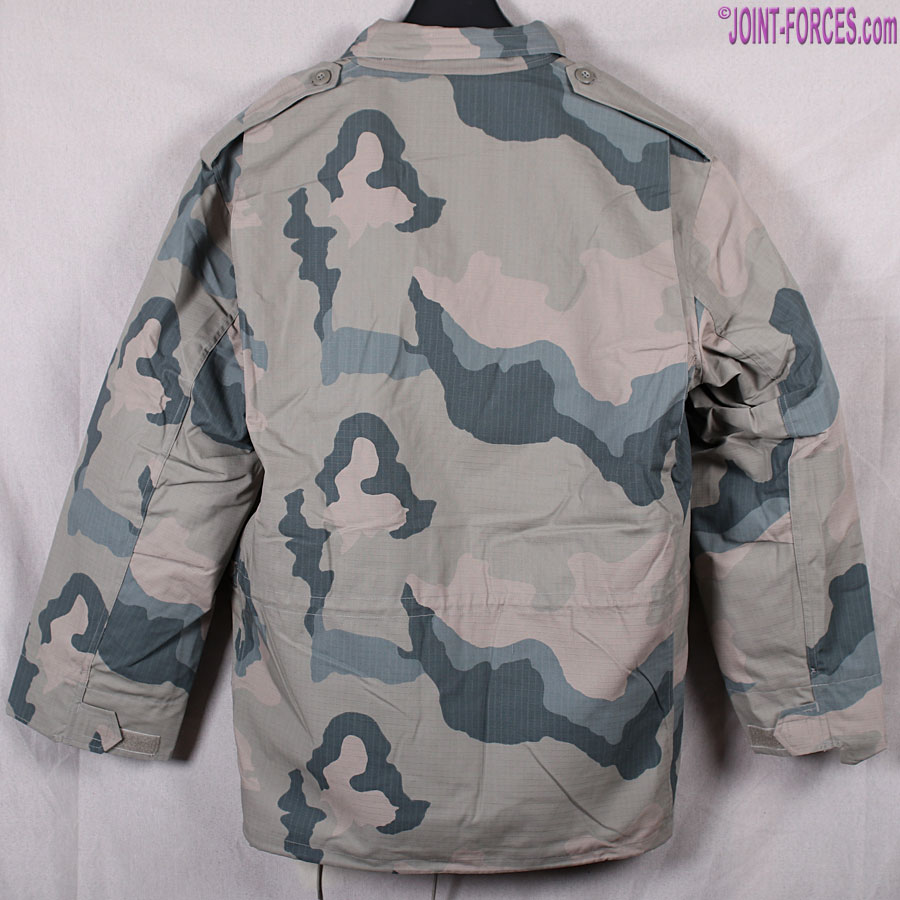
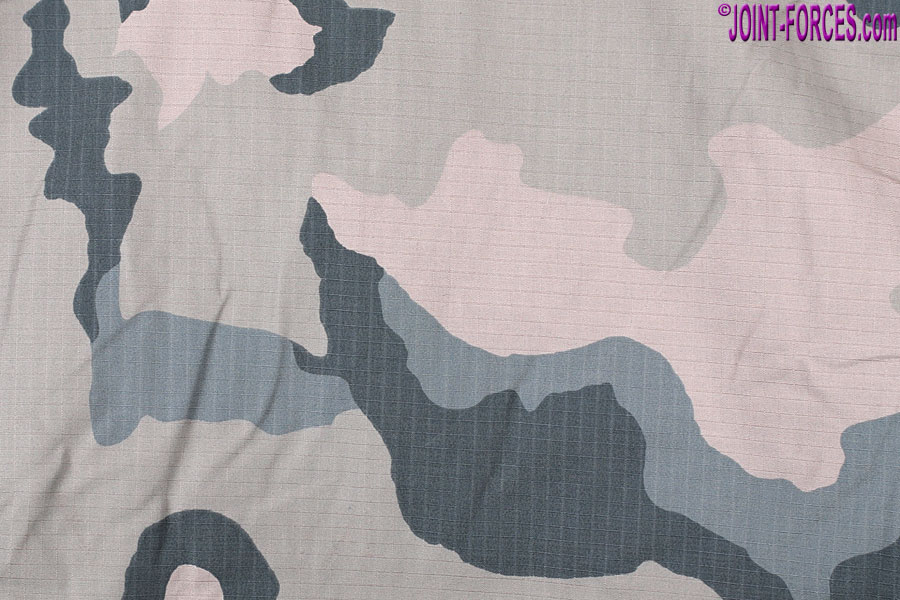
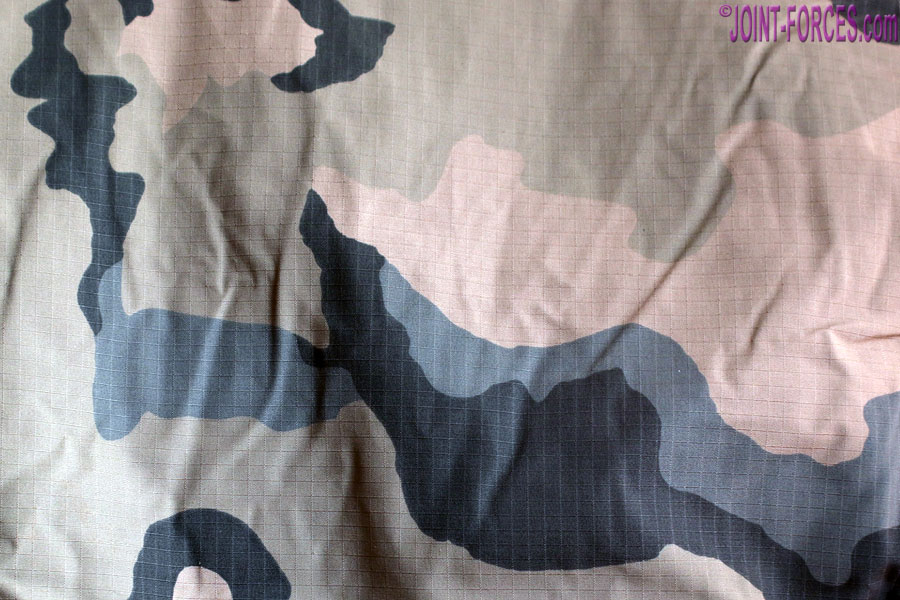
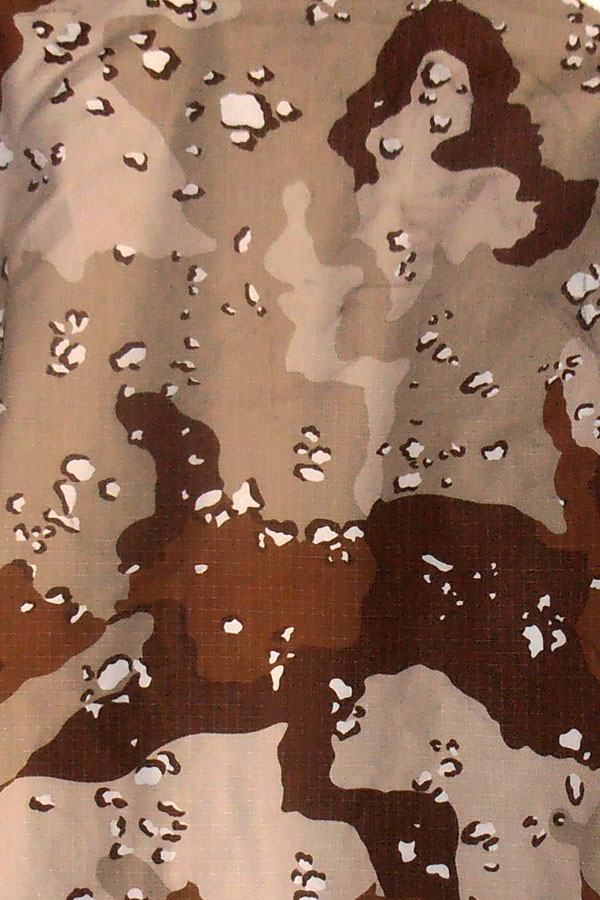
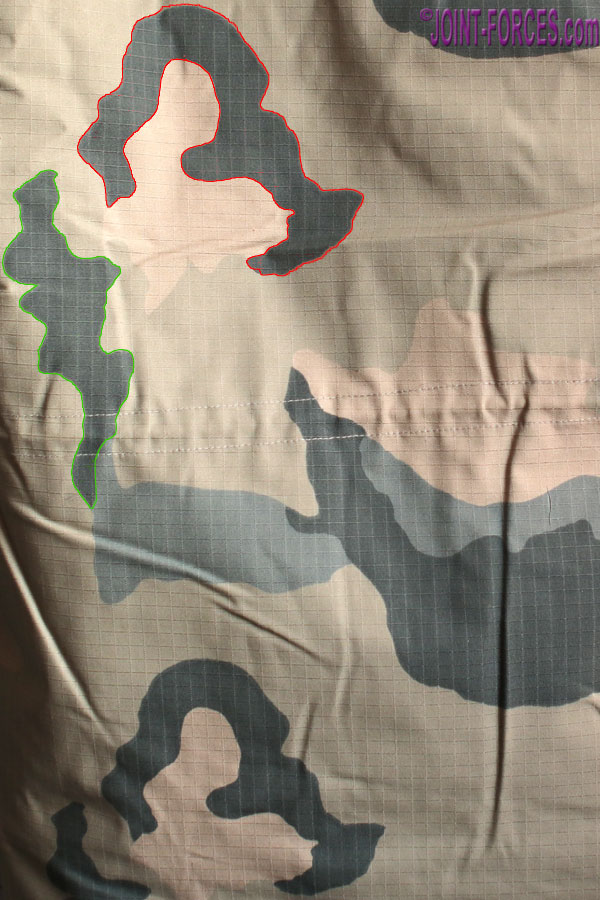




















Pingback : M-1965 Camouflage Conundrum ~ Can You Help? | Joint Forces News